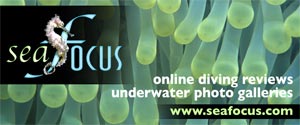- Home
- Directory
- Shop
- Underwater Cameras - Photographic Accessories
- Smartphone Housings
- Sea Scooters
- Hookah Dive Systems
- Underwater Metal Detectors
- Dive Gear
- Dive Accessories
- Diving DVD & Blu-Ray Discs
- Diving Books
- Underwater Drones
- Drones
- Subscriptions - Magazines
- Protective Cases
- Corrective Lenses
- Dive Wear
- Underwater Membership
- Assistive Technology - NDIS
- On Sale
- Underwater Gift Cards
- Underwater Art
- Power Stations
- Underwater Bargain Bin
- Brands
- 10bar
- AOI
- AquaTech
- AxisGo
- Backscatter Underwater Video and Photo
- BLU3
- Cayago
- Chasing
- Cinebags
- Digipower
- DJI
- Dyron
- Edge Smart Drive
- Eneloop
- Energizer
- Exotech Innovations
- Fantasea
- Fotocore
- Garmin
- Geneinno
- GoPro
- Hagul
- Hydro Sapiens
- Hydrotac
- Ikelite
- Indigo Industries
- Inon
- Insta360
- Intova
- Isotta Housings
- Jobe
- JOBY
- Kraken Sports
- LEFEET
- Mirage Dive
- Nautica Seascooters
- Nautilus Lifeline
- NautiSmart
- Nitecore
- Nokta Makro
- Oceanic
- Olympus
- OM System
- Orca Torch
- Paralenz
- PowerDive
- QYSEA
- Scubajet
- Scubalamp
- Sea & Sea
- SeaDoo Seascooter
- SeaLife
- Seavu
- Shark Shield
- Sherwood Scuba
- Spare Air
- StickTite
- Sublue
- Suunto
- SwellPro
- T-HOUSING
- Tusa
- U.N Photographics
- Venture Heat
- XTAR
- Yamaha Seascooter
- Youcan Robot
Yap, Micronesia - not just a place for Manta Rays
Contributed by Tim Hochgrebe
Story by Sigfried Gudergan & Tim Hochgrebe – Photos & Video by Tim Hochgrebe
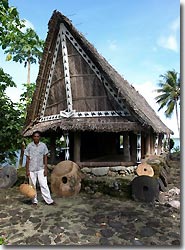 Yep,
it is worthwhile traveling from Australia to Yap in Micronesia – or from
anywhere else for that matter. Yap is a unique paradise in Micronesia - lush,
tropical and with abundant life above and below the water. Yap is located between
Palau and Guam and lies east of the Philippines. It has the Pacific Ocean on
one side and the Philippine Sea on the other and actually consist of four islands
very close together joined within a common coral reef. The islands are mainly
fringed by mangroves, some secluded tropical beaches and a coral barrier reef.
Yep,
it is worthwhile traveling from Australia to Yap in Micronesia – or from
anywhere else for that matter. Yap is a unique paradise in Micronesia - lush,
tropical and with abundant life above and below the water. Yap is located between
Palau and Guam and lies east of the Philippines. It has the Pacific Ocean on
one side and the Philippine Sea on the other and actually consist of four islands
very close together joined within a common coral reef. The islands are mainly
fringed by mangroves, some secluded tropical beaches and a coral barrier reef.
Yap was originally settled about 3,500 years ago by seagoing voyagers from
Indonesia or the Philippines; then visited by Portuguese, Spanish, British,
Dutch and American explorers and traders. In 1869 Yap became a permanent German
trading station until, after World War I, in 1919 the Japanese took control.
The Japanese occupation of Yap ended in 1944 when it was taken under administration
of the United States of America. 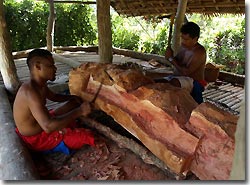 Since
1986 it has been an independent State in the Federated States of Micronesia.
Since
1986 it has been an independent State in the Federated States of Micronesia.
Notwithstanding the influences of Europeans, Japanese and Americans, today, Yapese people are proud in their culture and traditions and often still wear their traditional dress. Organised around villages, their life centers around Men's Houses where the local Chief conducts village meetings. A Yap Council of High Chiefs still has great impact on and respect among the people.
All land on Yap is privately owned and Yapese people consider their land very
valuable in that it provides sustenance and income. 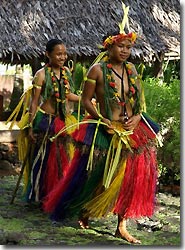 Although
they are welcoming people, using the land or walking across it requires permission
which sometimes can be obtained for a fee. Similarly, ownership of the outlying
reefs, including the farthest edges of its fringing reef, is claimed by adjacent
villages or municipalities and divers require a permission to dive at those
reefs.
Although
they are welcoming people, using the land or walking across it requires permission
which sometimes can be obtained for a fee. Similarly, ownership of the outlying
reefs, including the farthest edges of its fringing reef, is claimed by adjacent
villages or municipalities and divers require a permission to dive at those
reefs.
Our base on Yap was Traders’ Ridge which is a truly classy resort with friendly and fun staff. The hotel of Traders’ Ridge, its restaurants and bar overlook Chammorro Bay with the open ocean beyond.
Lush gardens surround the resort and offer a great tropical setting to relax and lean back after exploring the islands or diving. Part of the Traders Ridge resort complex is the Ethnic Art Institute of Micronesia which recreates the traditions of the Caroline's.
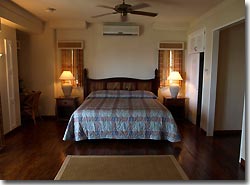 It
was established by a not for profit organisation in 1994 and is dedicated to
the revitalization of the traditional cultures of Micronesia. You can watch
carvers and weavers in their traditional dress and if you are as lucky as us,
you can witness some fantastic traditional dance performances. The bamboo dance
we got to see was an amazing spectacle of colour and sounds and clearly showed
the Yapese culture at its best.
It
was established by a not for profit organisation in 1994 and is dedicated to
the revitalization of the traditional cultures of Micronesia. You can watch
carvers and weavers in their traditional dress and if you are as lucky as us,
you can witness some fantastic traditional dance performances. The bamboo dance
we got to see was an amazing spectacle of colour and sounds and clearly showed
the Yapese culture at its best.
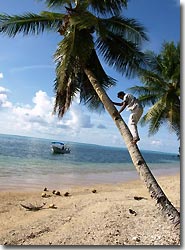 One
of the resort’s guides helped us explore Yap, some villages and its people.
This included a trip to the Island of Rumung which had been forbidden to all
foreigners since the 17th century. The restrictions to enter the island were
only recently lifted so that some outsiders could visit selected areas of this
historic island. The preservation of culture and tradition was paramount to
the community of Rumung and it was quite an exciting feeling to step on the
‘forbidden island’ and meet some of its inhabitants and see the
biggest stone money in Yap.
One
of the resort’s guides helped us explore Yap, some villages and its people.
This included a trip to the Island of Rumung which had been forbidden to all
foreigners since the 17th century. The restrictions to enter the island were
only recently lifted so that some outsiders could visit selected areas of this
historic island. The preservation of culture and tradition was paramount to
the community of Rumung and it was quite an exciting feeling to step on the
‘forbidden island’ and meet some of its inhabitants and see the
biggest stone money in Yap.
Yap, like some other Micronesian Islands, has Stone Money which is still used
today as a means of exchange. Although these huge disks rarely move location,
ownership can change through marriage or according to other traditional principles.
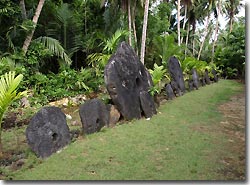 Originally,
they were quarried in Palau hundreds of years ago and brought in open outrigger
canoes to Yap. Their value is dependent on their size but more importantly determined
by the peril of the voyage and the fate of the carver.Yapanese people know who
owns each piece and the story behind it.
Originally,
they were quarried in Palau hundreds of years ago and brought in open outrigger
canoes to Yap. Their value is dependent on their size but more importantly determined
by the peril of the voyage and the fate of the carver.Yapanese people know who
owns each piece and the story behind it.
Another great experience was to explore Yap by kayak - following our trusted guide we paddled the mangrove ecosystem and saw wild birds endemic to Yap along with its rich flora, and other fauna.
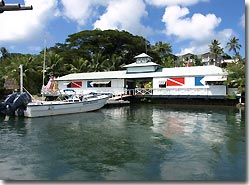 Traders’
Ridge runs its own dive centre with a team of competent, friendly instructors
and dive guides to help you explore the pristine underwater world of Yap. The
dive boats are fast, all equipped with powerfull 4stroke engines and depending
on the level of the tide it takes between 10 and 30 minutes to get to most of
the dive sites. Hire gear is in top condition and Traders Ridge Dive Centre
offers free Nitrox to anyone with Nirtox certification – and naturally
they are happy to certify anybody during their stay on Yap.
Traders’
Ridge runs its own dive centre with a team of competent, friendly instructors
and dive guides to help you explore the pristine underwater world of Yap. The
dive boats are fast, all equipped with powerfull 4stroke engines and depending
on the level of the tide it takes between 10 and 30 minutes to get to most of
the dive sites. Hire gear is in top condition and Traders Ridge Dive Centre
offers free Nitrox to anyone with Nirtox certification – and naturally
they are happy to certify anybody during their stay on Yap.
While mostly known for the Manta Rays, Yap has some other quite exciting diving
to offer as well. 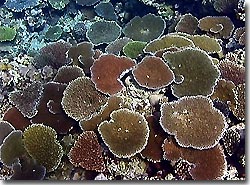 We
found that diving in the South of the islands is an absolute must as fantastic
walls, drop offs and caverns provide amazing scenery, the water is generally
crystal clear and the reefs are healthy.
We
found that diving in the South of the islands is an absolute must as fantastic
walls, drop offs and caverns provide amazing scenery, the water is generally
crystal clear and the reefs are healthy.
The mangroves surrounding Yap provide rich plankton for a the islands’ Manta Ray population. The Pacific Manta Rays found in Yap have wingspans of 5 to 7 meters that allow them to gently glide through the water despite their up to 1000 kilograms. Typically, the Mantas feed at the Miil and Goofnuw channels. Around those channels you can explore a number of manta cleaning stations where cleaner wrasses preen parasites from the gills of these majestic animals.
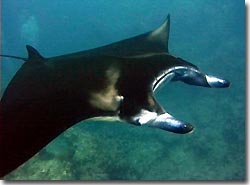 At
Miil Channel with depths between 10 to 30 meters, we did a number of drift dives
at the end of the incoming tide and as the tide began to change the Manta Rays
appeared. As Mantas like plankton quite often the visibility in the manta channels
can be quite low – especially on outgoing tides and it can be a little
frustrating hanging in low visibility waters.
At
Miil Channel with depths between 10 to 30 meters, we did a number of drift dives
at the end of the incoming tide and as the tide began to change the Manta Rays
appeared. As Mantas like plankton quite often the visibility in the manta channels
can be quite low – especially on outgoing tides and it can be a little
frustrating hanging in low visibility waters.
Some dives we were hovering over the reef flats in strong currents with the help of our trusted reefhooks hoping for the Mantas to appear – but when they do it is truly spectacular.
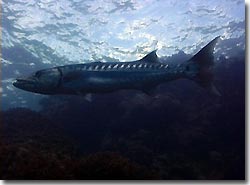 Their
graceful moves and their masssive size leaves deep memories and anybody that
has dived or snorkelled with these magic creatures will long for more …
and many visitors to Yap return dive after dive trying to spend as much time
as possible with these animals.
Their
graceful moves and their masssive size leaves deep memories and anybody that
has dived or snorkelled with these magic creatures will long for more …
and many visitors to Yap return dive after dive trying to spend as much time
as possible with these animals.
At the southern tip of the island we dived a number of excellent sites including Yap Caverns (5 to 35 meters), which not only provided a warren of caverns but also some fantastic wall diving. The maze of caverns is quite extensive and it makes for a great start of a dive. As you drift through the caverns you might cross the paths of a few White-tip Reefsharks. Large schools of pelagics, including barracuda and tuna, patrol the clean walls of this dive site. Not to forget the eagle ray cleaning station and all the Hawksbill Turtles in this area.
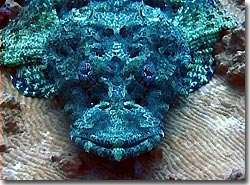

On one of our missions down South we encounterd a massive school of Humphead
Parrotfish – a sight never to be forgotten as their massive silouettes
passed above us (see cavern video clip).
A few of the other dives we managed to fit into our busy schedules included
Purple Haze, Cherry Blossom Wall, Big Bend, and Gilman Wall.
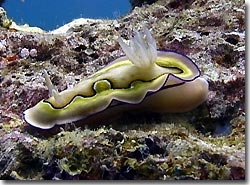 Cherry
Blossom Wall is a vertical wall on the western side of Yap between 5 and 45
meters. The top of the drop-off is about 10 meters deep, and is home to both
Grey and Black-tip Reef sharks. There was also a large number of unicorn fish.
Cherry
Blossom Wall is a vertical wall on the western side of Yap between 5 and 45
meters. The top of the drop-off is about 10 meters deep, and is home to both
Grey and Black-tip Reef sharks. There was also a large number of unicorn fish.
Purple Haze is located north of Cherry Blossom Wall on the west side of the island, Purple Haze is a big wall covered with purple soft corals. Although we did not experience great fish life, the "purple wall" is a site worth visiting.
Big Bend (5 to 50 meters) is on the western side of Yap and represents a site with a curve in the reef line. The reef begins like a normal wall when at about 18 meters it angles downward to over several hundred meters depth. On that dive we have seen various reef fish, White-tip Reefsharks, Black-tip Reefsharks, and turtles.
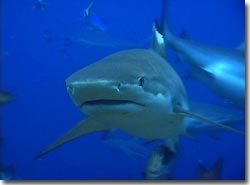 One
of the non-manta attractions of Yap is its healthy population of sharks, in
particular Grey Reefsharks and one morning we went out to Vertigo wall for a
shark feed dive and WOW … there were easy close to 30 Grey Reefsharks
homing in on the home made tuna head popsticles and we had a full 45 minutes
of feeding spectacular. Plenty of Black-tip Reefsharks and a few White-tips
were in it for the food as well and one particularly large moray eel positioned
itself very akwardly right where everybody was grouped up watching the show.
It’s hard to describe the excitement of a shark feed dive and it surely
is a diving activity that not everybody agrees with.
One
of the non-manta attractions of Yap is its healthy population of sharks, in
particular Grey Reefsharks and one morning we went out to Vertigo wall for a
shark feed dive and WOW … there were easy close to 30 Grey Reefsharks
homing in on the home made tuna head popsticles and we had a full 45 minutes
of feeding spectacular. Plenty of Black-tip Reefsharks and a few White-tips
were in it for the food as well and one particularly large moray eel positioned
itself very akwardly right where everybody was grouped up watching the show.
It’s hard to describe the excitement of a shark feed dive and it surely
is a diving activity that not everybody agrees with. 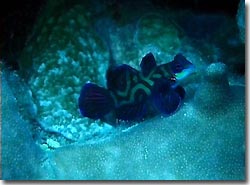 However,
despite our belief that any animal above and below the water should rather be
left alone and observed naturally, the shark feed on Yap was quite something
indeed (see video clip).
However,
despite our belief that any animal above and below the water should rather be
left alone and observed naturally, the shark feed on Yap was quite something
indeed (see video clip).
Often overlooked when reading about diving in Yap is the fact that Yap offers one of the most amazing Mandarinfish dive sites you can find in the whole Australasian region. Unlike the Mandarinfish we saw in Lembeh Strait, Sulawesi here in Yap these unique fish can already be seen before dusk (the Mandarinfish clip below has been filmed without video lights, to not disturb the fish).
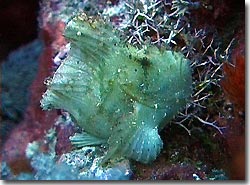 The
mandarin site is only minutes away from the village of Colonia and Traders Ridge
and makes for a fantastic afternoon and evening dive adventure. Watching the
male Mandarinfish chase the females around the branching hard corals, seeing
them feed without harassing them with a dive torch is a unique experience. We
should have gone out there again as we didn’t manage to observe the actual
mating of the fish above the reef , but there has to be a reason to return to
Yap, so let this be one of many …
The
mandarin site is only minutes away from the village of Colonia and Traders Ridge
and makes for a fantastic afternoon and evening dive adventure. Watching the
male Mandarinfish chase the females around the branching hard corals, seeing
them feed without harassing them with a dive torch is a unique experience. We
should have gone out there again as we didn’t manage to observe the actual
mating of the fish above the reef , but there has to be a reason to return to
Yap, so let this be one of many …
We truely enjoyed Yap and the great combination of diving, great cultural experiences and of course the luxurious, relaxing time at Traders’ Ridge.
We think it is a good idea to combine Yap and Palau in one extended dive trip as the journey to Micronesia is a long one for most people and the combination of both islands diving will leave you with unforgettable memories.
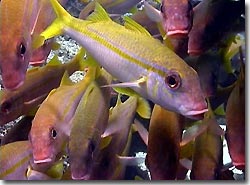
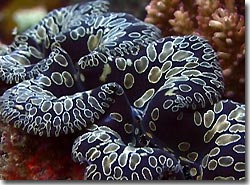
Yap quick facts:
- The population of Yap is approximately 8,000 in Colonia (the capital state) and ten other municipalities combined.
- Getting there: Currently international travelers arrive via Manila, Taipei or Guam. Continental Airways flies from Cairns directly to Guam.
- Other bits: Local currency is U$. Driving is on the right and the speed limit is 40 km/h (25 mph).

Yap Photo Gallery:
Yap Video clips:
Shopfront
-
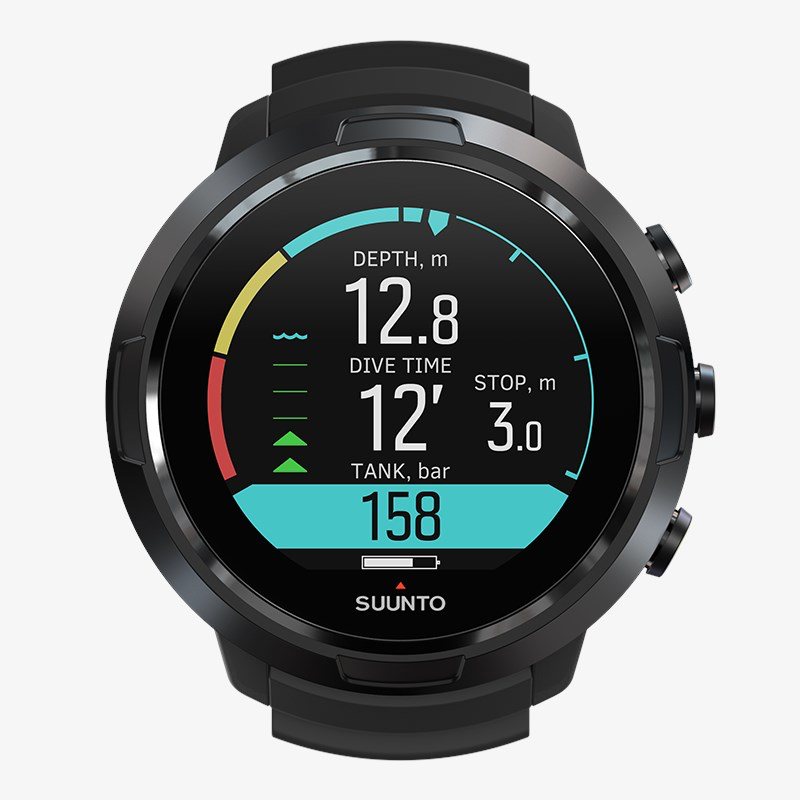 Suunto D5 Dive Computer with USB Cable
Suunto D5 Dive Computer with USB Cable
- Price A$ 749.00
-
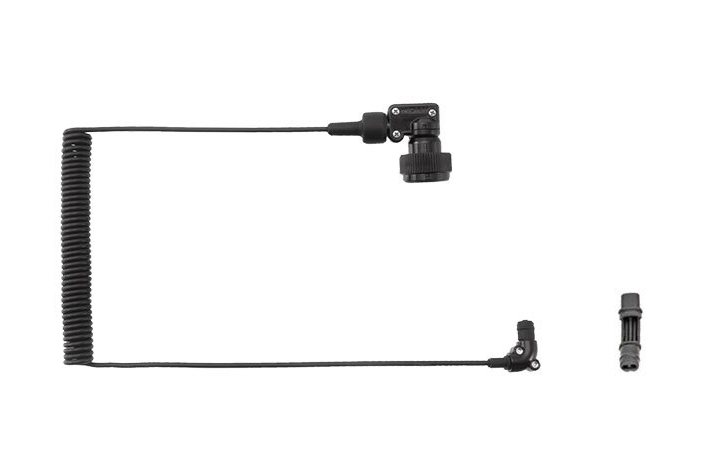 Inon Optical D Cable Type L Rubber Bush Set 2
Inon Optical D Cable Type L Rubber Bush Set 2
- Price A$ 139.00
-
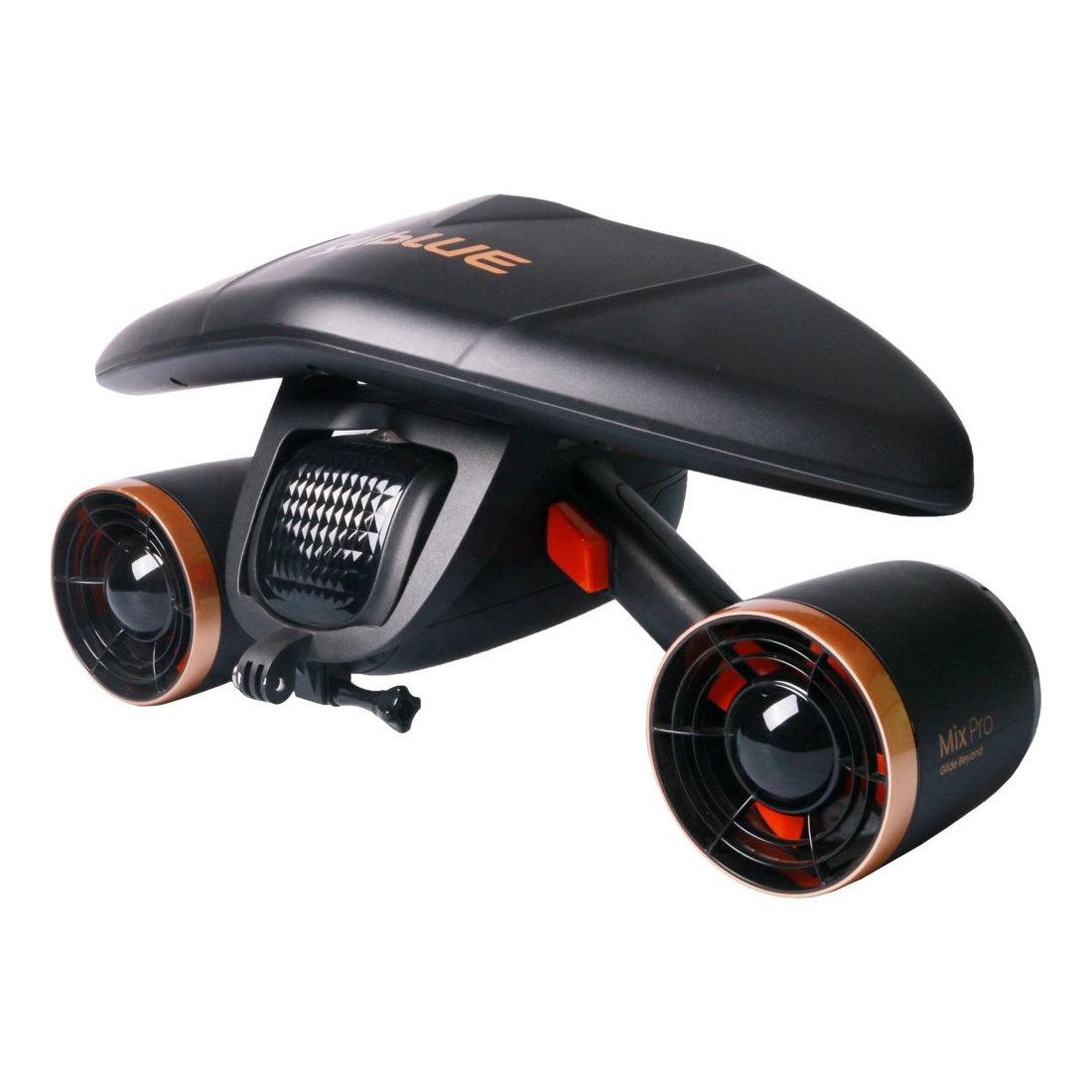 Sublue Whiteshark MixPro - Underwater Scooter
Sublue Whiteshark MixPro - Underwater Scooter
- Price A$ 1,199.00
-
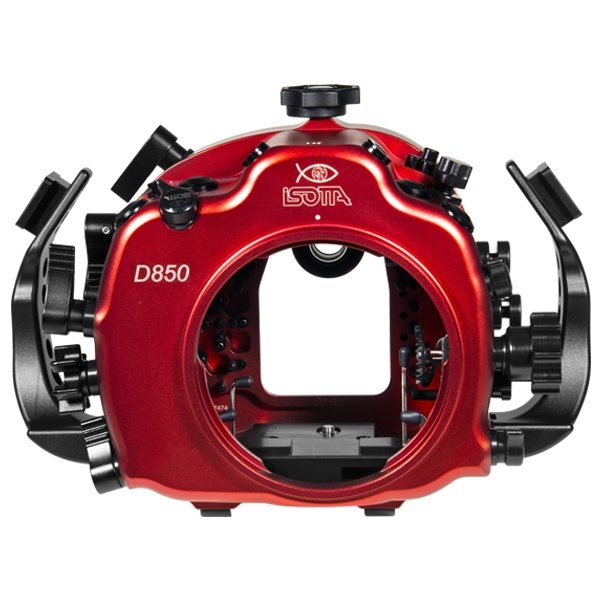 Isotta Underwater dSLR Camera Housings
Isotta Underwater dSLR Camera Housings
- Price A$ 4,899.00
-
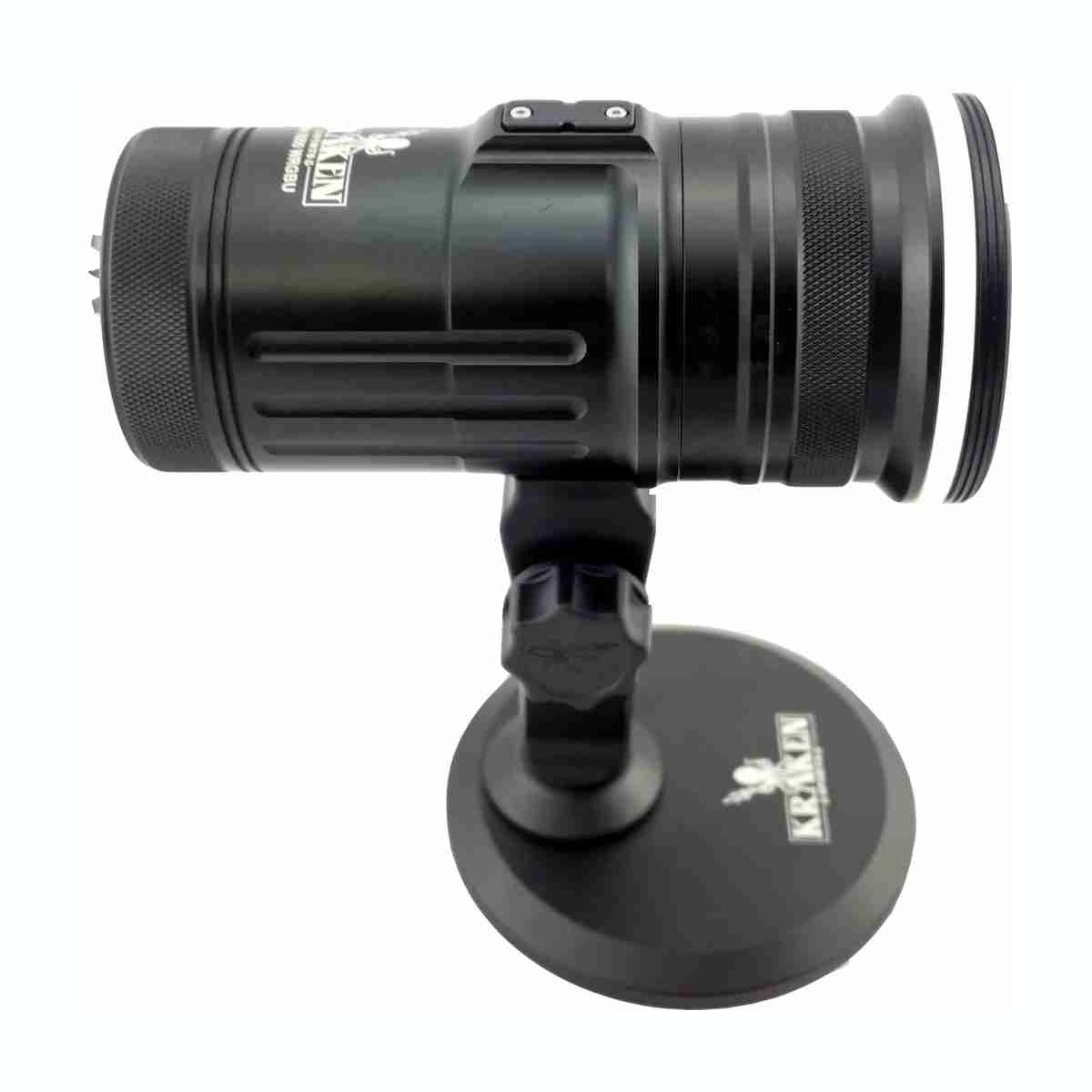 Kraken Hydra 8000 WRGBU
Kraken Hydra 8000 WRGBU
- Price A$ 1,129.00
-
 Insta360 X4 8K 360 Action Camera
Insta360 X4 8K 360 Action Camera
- Price A$ 869.00
-
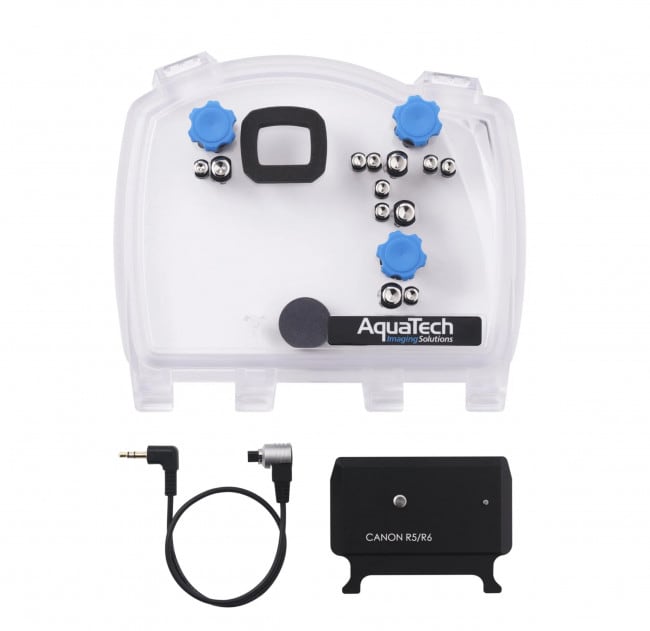 AquaTech EDGE PRO Conversion Kit - Sony - Nikon - Canon - Fuji
AquaTech EDGE PRO Conversion Kit - Sony - Nikon - Canon - Fuji
- Price A$ 1,049.00
In the Directory



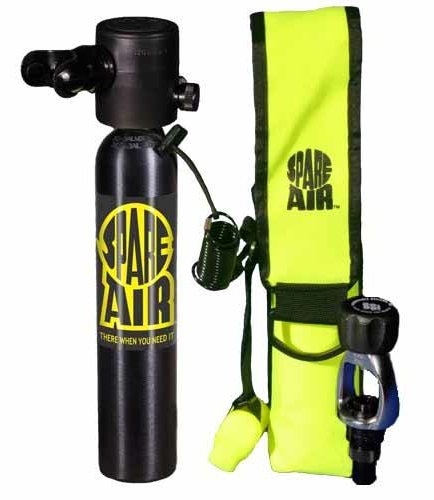
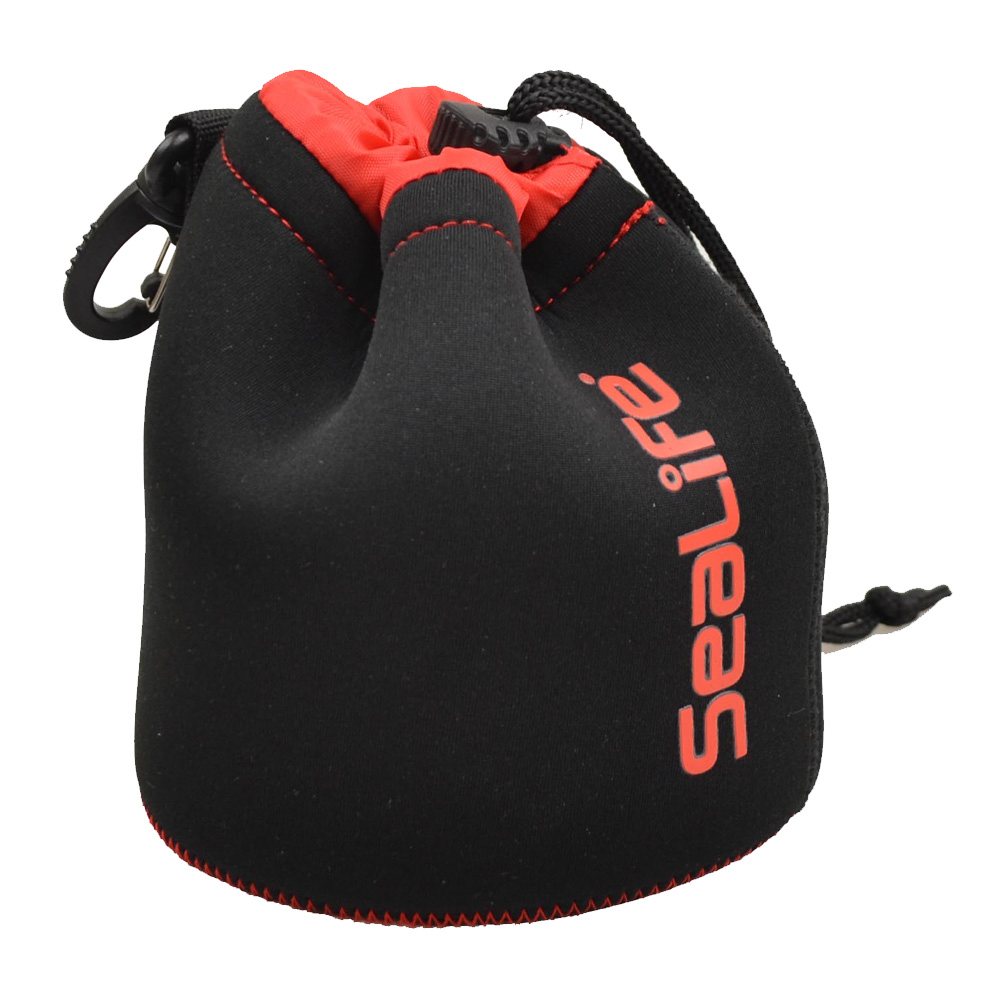
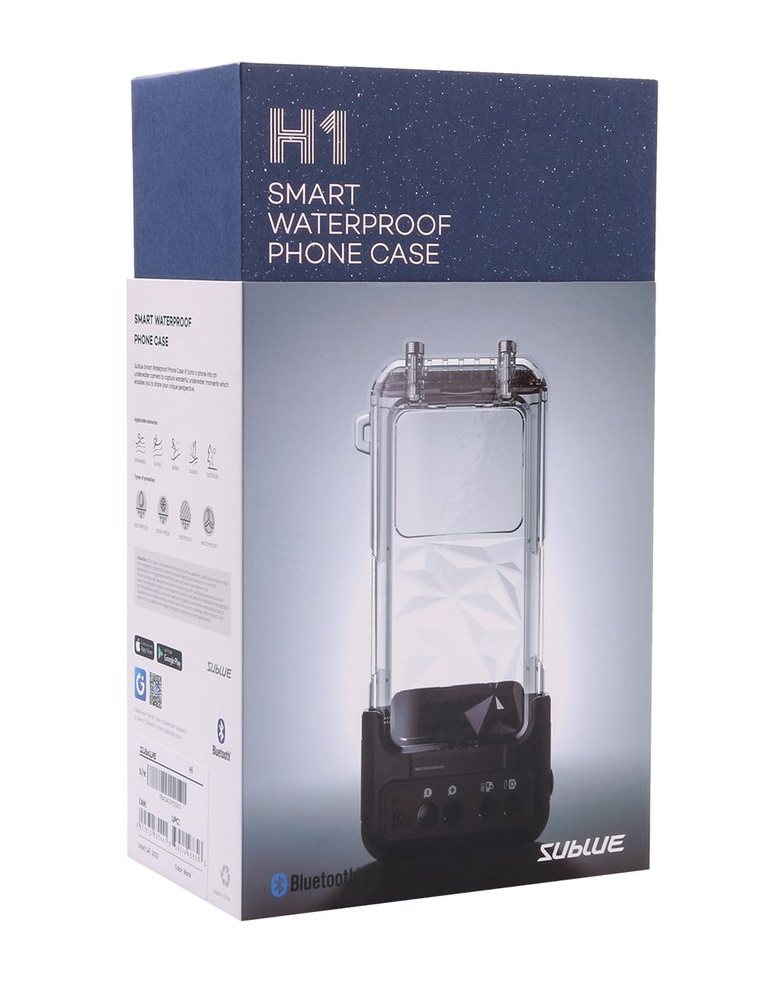

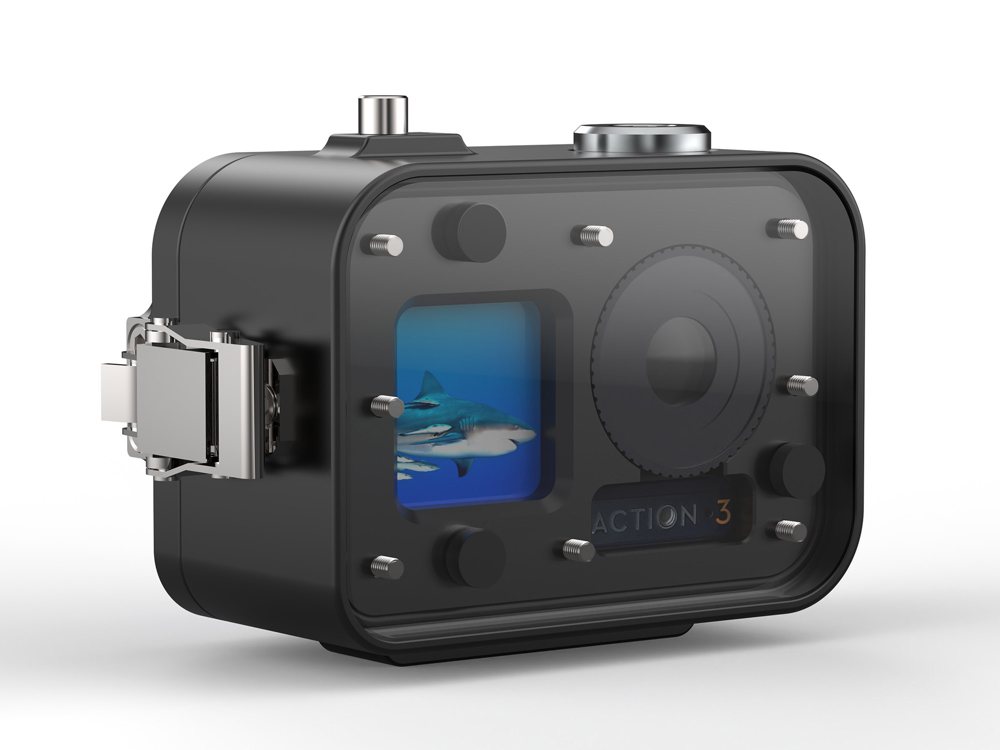
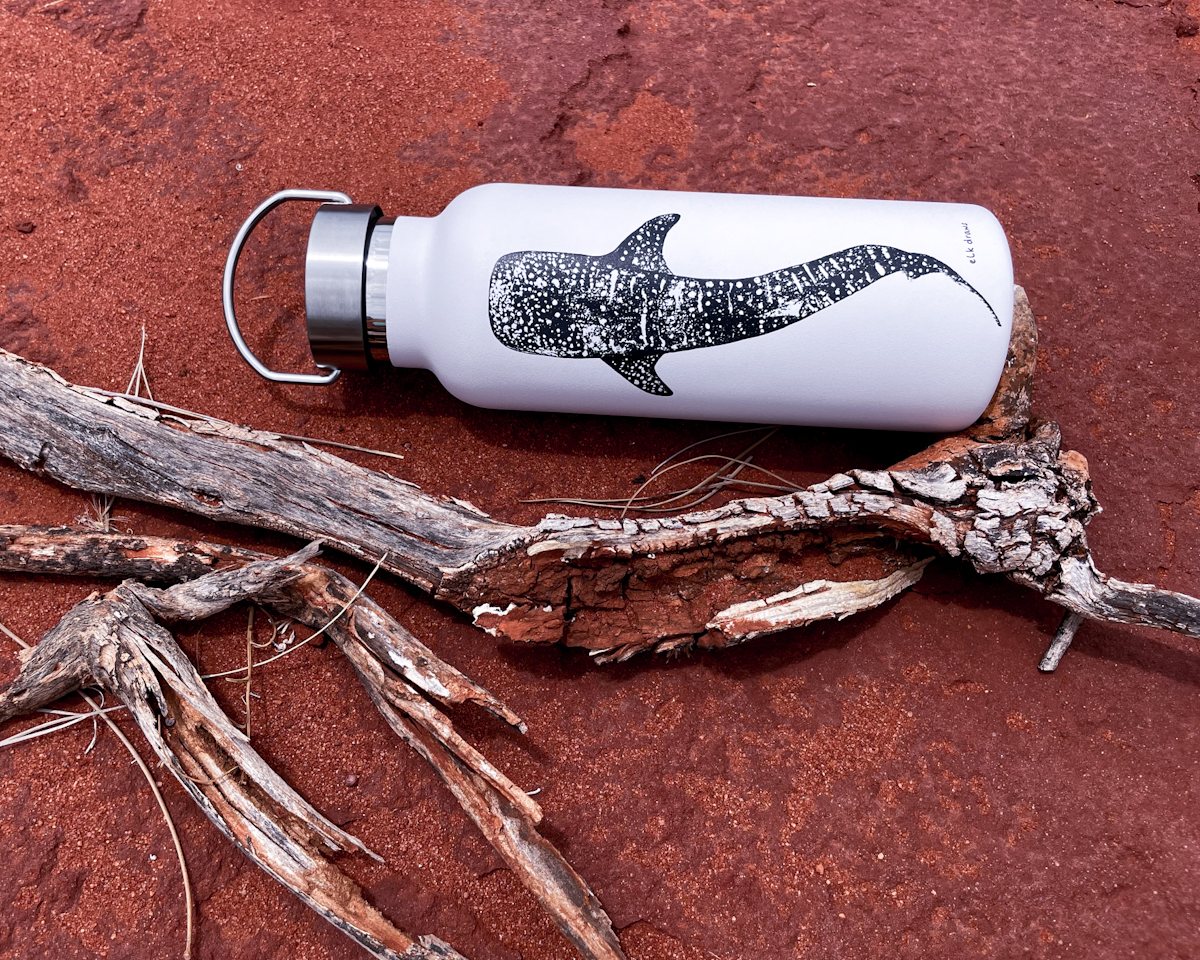
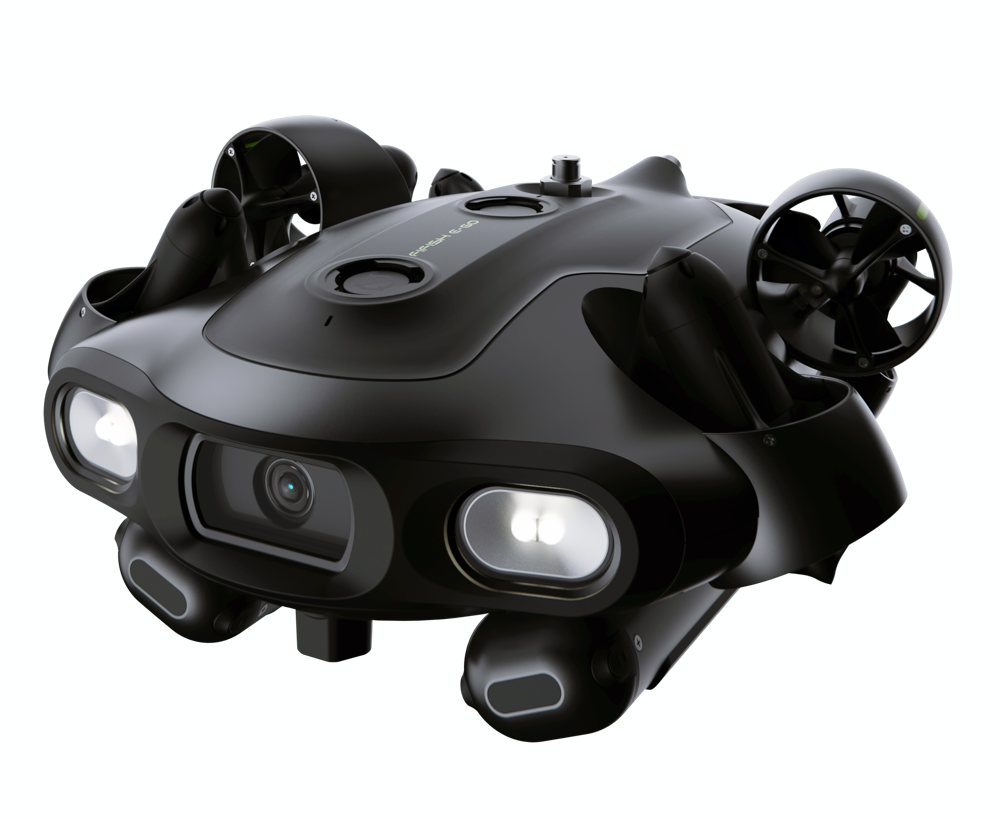




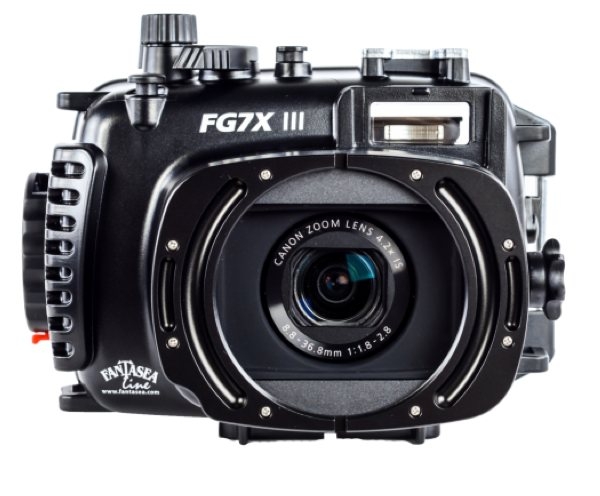 Fantasea FG7X III S Vacuum Underwater Housing for Canon G7X Mark III
Fantasea FG7X III S Vacuum Underwater Housing for Canon G7X Mark III 



